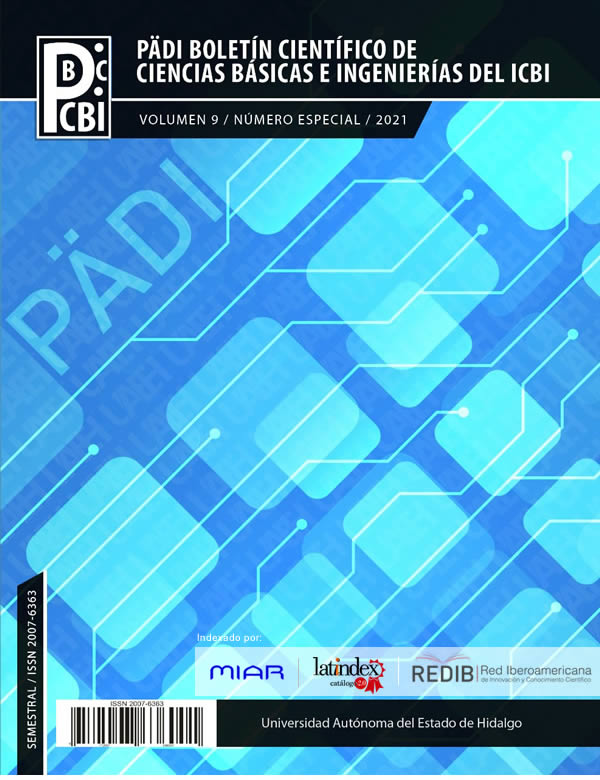Proposal for the gamification of experiments in virtual laboratories
Abstract
Virtual laboratories have been used in different ways to support the teacher to explain different problems or procedures in different areas to simulate a programmed experience or design their own and, although their usefulness is proven, their design is sometimes far from the needs education of students. In this sense, gamification can contribute, by transferring the mechanics of the games, to an improvement in the results of the process, since due to its characteristics it can enhance meaningful learning, through reward and recognition. The objective of this article is to present a proposal for the gamification of experiments in virtual laboratories with the Methodology for the Development of Educational Environments of Virtual Reality (MEDEERV) and the results of a heuristic evaluation of the degree of usability applied to the interface of a prototype developed in a video game engine with virtual reality modeling techniques, which will be used as complementary teaching material for high school students.
Downloads
References
Alvarez, A. (2020). Requerimientos para el diseño de la experiencia. Revista KEPES, 277-299. doi:https://doi.org/10.17151/kepes.2020.17.22.11.
Arellano, M. (2020). Oceanogràfic (arquitecto Félix Candela), Ciudad de las Artes y las Ciencias. Valencia. España. Arch Daily. Obtenido de https://www.archdaily.mx/mx/tag/felix-candela
Colorado, B., y Navarro, R. (2012). La usabilidad de las TIC: una visión didáctica y tecnológica. Investigación de Ciencias y Sustentabilidad (CICS). Obtenido de ISSN; ISSN 2169-6160
Contreras, R. (2016). Juegos digitales y gamificación aplicados en el ámbito de la educación. RIED Revista Iberoamericana de Educación a Distancias, 19(2), 7-33. doi:http://dx.doi.org/10.5944/ried.19.2.16143
Contreras, R., Contreras, R. y Eguia, J. L. (2016). Gamificación en aulas universitarias. Barcelona: Institut de la Comunicació (InCom-UAB), Universitat Autónoma de Barcelona.
Diaz, L., Tarango, J. y Romo, J. R. (2020). Realidad Virtual en procesos de aprendizaje en estudiantes universitarios: motivación e interés para despertar vocaciones científicas. Cuadernos de Documentación Multimedia, 31, e68958. https://doi.org/10.5209/cdmu.68958.
Garcia, G., Polvo, Y., Jose, H. J., Maria, S., Bautista, H., Collazos, C. y Julio, H. (2019). Medición de la usabilidad del diseño de interfaz de usuario con el método de evaluación heurística: dos casos de estudio. Revista Colombiana de Computación, 20(1), 23-40. doi:https://doi.org/10.29375/25392115.3605
Gutiérrez, M. d. (2020). Diseño de un entorno virtual para el aprendizaje de la Ley de Gravitación de Newton en Física básica, Pachuca: Pädi Boletín Científico de Ciencias Básicas e Ingenierías del ICBI, 7(14), doi:https://doi.org/10.29057/icbi.v7i14.4461
Guzmán, M. Á., Escudero, A. y Canchola, S. L. (2020). “Gamificación” de la enseñanza para ciencia, tecnología, ingeniería y matemáticas: cartografía conceptual. Sinéctica. Sinéctica, 654-655. doi:https://doi.org/10.31391/s2007-7033(2020)0054-002
ISO, 9.-1. (2018). Ergonomics of human-system interaction — Part 11: Usability: Definitions and concepts. International Standar Organization.
Morales, C., Zozaya, R. G., Rojo, A. y Torres, A. (2016). Laboratorios virtuales como alternativa para el desarrollo de competencias pprofesionales. Revista Iberoamedicana de Producción Académica y gestón Educativa, 2(4), 101-112. Obtenido de https://www.pag.org.mx/index.php/PAG/article/view/376
Nielsen, J. (2005). Usability Engineering. San Francisco; ISBN 0-12-518406-9: Morgan Kaufman.
Ortiz, A. M., Jordán, J. y Agredal, M. (2018). Gamificación en educación: una panorámica. SciELO brasil Educação e Pesquisa, 44. doi:http://dx.doi.org/10.1590/s1678-4634201844173773
Ramírez, K. (2017). Interfaz y experiencia de usuario: parámetros importantes para un diseño efectivo. Revista Tecnología en Marcha, 30(5), 49-54. doi:http://dx.doi.org/10.18845/tm.v30i5.3223
Toala, J., Arteaga, J., Quintana, J. y Santana, M. (2020). La Realidad Virtual como herramienta de innovación educativa. Episteme Koinoia, 3(5), 240-257. doi: DOI:10.35381/e.k.v3i5.835.
Torres, G. A. (2019). La Gamificación en los ambientes de realidad virtual movil. Pistas Educativas, 41(133), 671-699. Obtenido de http://www.itcelaya.edu.mx/ojs/index.php/pistas/article/view/2054
Torres, G. A., Franco, A., Gutiérrez, M. d., y Suárez, A. (2017). Metodología para el modelado de sistemas de realidad virtual para el aprendizaje en dispositivos móviles. Pistas educativas, 519-532. Obtenido de http://www.itcelaya.edu.mx/ojs/index.php/pistas/article/view/1054/908
Unity, Game Engine. (2021). Plataforma para el desarrollo en tiempo real para video Juegos. Obtenido de https://store.unity.com/products/unity-pro?gclid=Cj0KCQjw16KFBhCgARIsALB0g8JXUCS5kTuHW9pMz4WsFkMbm5E5r_XJK_iTjAuBERHOeOonO_xsplQaAjrtEALw_wcB
Zaldibar, A. (2019). Laboratorios reales versus laboratorios virtuales en las carreras de ciencias de la computación. IE Revista de investigación educativa de la REDIECH, 10(18), 9-22. doi:https://doi.org/10.33010/ie_rie_rediech.v10i18.454













